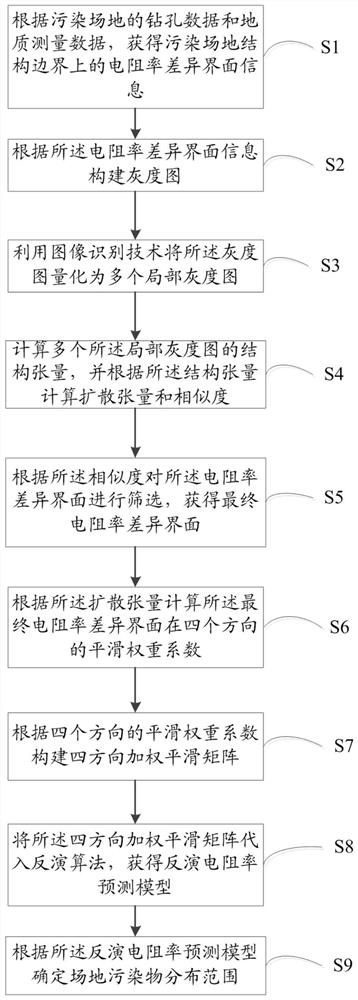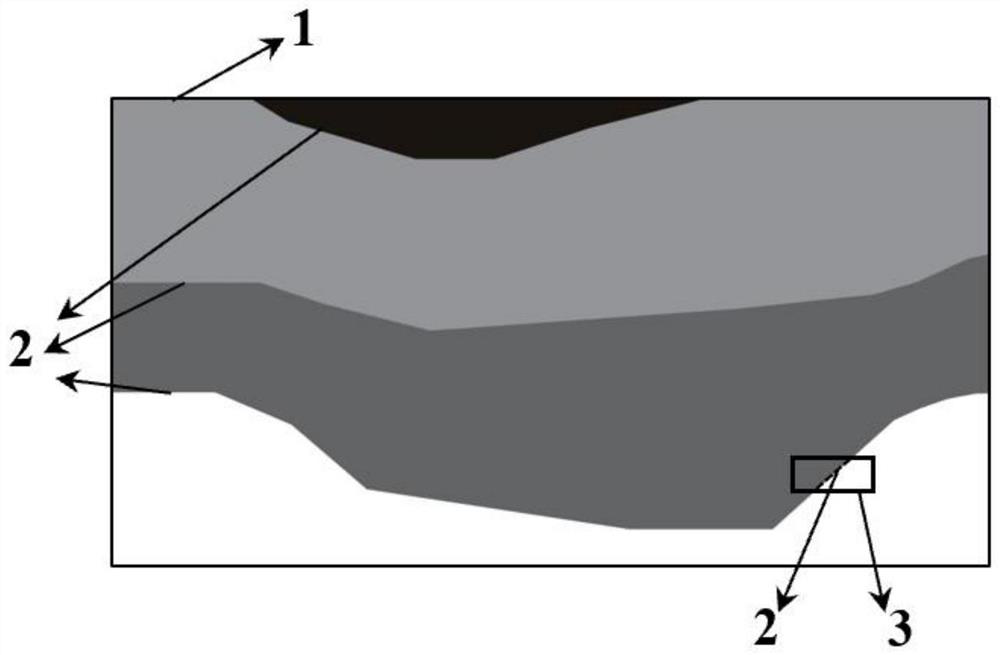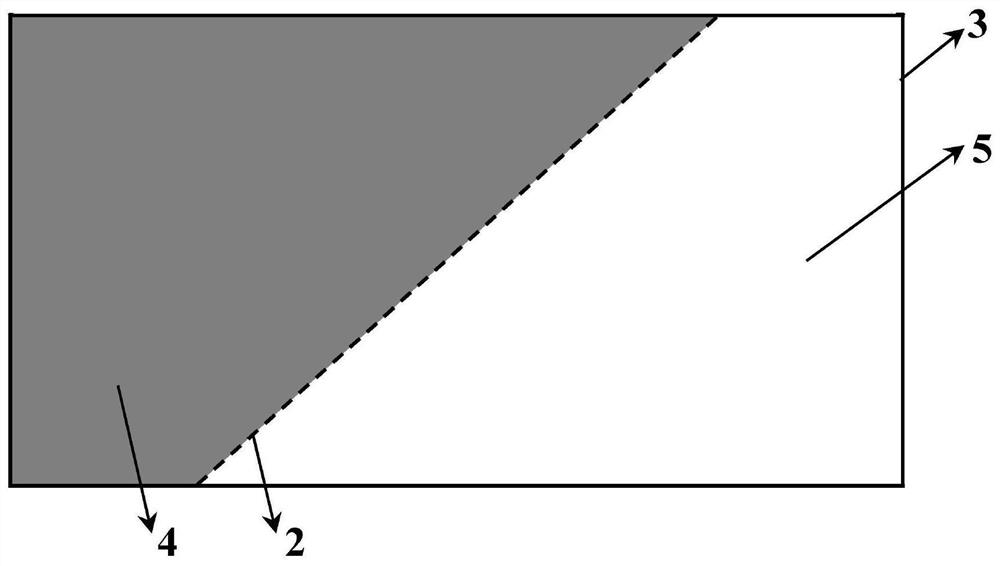Site pollutant description method and system based on directional smooth constraint inversion
A technology of smooth constraints and pollutants, applied in the generation of 2D images, image enhancement, instruments, etc., can solve problems such as large errors, wrong spatial distribution of pollutants, troubles in polluted site investigations, etc., to achieve accurate determination and improve accuracy sexual effect
- Summary
- Abstract
- Description
- Claims
- Application Information
AI Technical Summary
Problems solved by technology
Method used
Image
Examples
Embodiment 1
[0070] figure 1 It is a flow chart of the site pollutant characterization method based on directional smooth constraint inversion in an embodiment of the present invention, as shown in figure 1 As shown, the method includes:
[0071] S1: According to the drilling data and geological survey data of the polluted site, obtain the resistivity difference interface information on the structural boundary of the polluted site; the geological survey data includes geological radar measurement data or seismic survey data; the resistivity difference interface information includes Resistivity difference between resistivity difference interface 2 and resistivity difference interface.
[0072] S2: Construct grayscale according to the resistivity difference interface information figure 1 . Such as figure 2 As shown in , the resistivity difference interface 2 is represented by the pixel difference boundary, and the resistivity difference is represented by the pixel difference value. Dete...
Embodiment 2
[0107] Such as Figure 8 As shown, the present invention also discloses a site pollutant characterization system based on directional smooth constraint inversion, and the system includes:
[0108] The information determination module 401 is used to obtain the resistivity difference interface information on the structural boundary of the polluted site according to the drilling data and geological survey data of the polluted site; the geological survey data includes geological radar survey data or seismic survey data; the resistivity The rate difference interface information includes the resistivity difference interface and the resistivity difference value of the resistivity difference interface.
[0109] A construction module 402, configured to construct a grayscale image according to the resistivity difference interface information.
[0110] The quantization module 403 is configured to quantize the grayscale image into multiple partial grayscale images by using image recognit...
PUM
 Login to View More
Login to View More Abstract
Description
Claims
Application Information
 Login to View More
Login to View More - R&D
- Intellectual Property
- Life Sciences
- Materials
- Tech Scout
- Unparalleled Data Quality
- Higher Quality Content
- 60% Fewer Hallucinations
Browse by: Latest US Patents, China's latest patents, Technical Efficacy Thesaurus, Application Domain, Technology Topic, Popular Technical Reports.
© 2025 PatSnap. All rights reserved.Legal|Privacy policy|Modern Slavery Act Transparency Statement|Sitemap|About US| Contact US: help@patsnap.com



